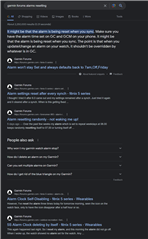During activities -after a timeout period- the display will be so dim that it is almost impossible to read. In some activities (such indoor rowing), activating the display with a gesture is not an option, so checking HR is basically impossible.
It is also a problem outside activities, because it makes hard to read even the time with just a glance on a display - you'd need to activate it with a gesture, and this makes the AOD completely irrelevant.
That's it, it will go back to garmin, because this way it is unable to
- show my HR during activities
- display the time in AOD
so it is completely useless as a sport watch and as a regular watch as well.




